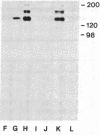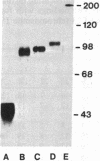Abstract
The expression of 13 newly defined human cell surface antigens identified by monoclonal antibodies was studied in a panel of reduced rodent-human somatic cell hybrid clones. For each antigenic system the segregation of antibody reactivity was concordant with the segregation of a specific human chromosome, permitting the chromosomal assignment of 13 gene loci determining antigen expression. The antigens can be placed in four groups on the basis of their patterns of control in the hybrid cells. (i) Presence of a single human chromosome is necessary and sufficient for antigen expression; L230 (assigned to chromosome 2), AJ425, K15 (chromosome 3), SR84 (chromosome 5), JF23, Q14 (chromosome 11), SV13 (chromosome 15), and F10 (chromosome 19). (ii) AJ2 (chromosome 10) and J143 (chromosome 17); two antigens coded for by separate human chromosomes but associated as a molecular complex on the surface of AJ2+/J143+ human cells. (iii) F8 (chromosome 19); antigen expression dependent on the growth characteristics of hybrid cells: substrate-adherent cells are F8+, whereas cells growing in suspension are F8-. (iv) AO122 and F23 (chromosome 15); antigen expression controlled by the permissive/inducing vs. nonpermissive/noninducing nature of the rodent fusion partner. Hybrids derived from both antigen-positive and antigen-negative human cells can express AO122 and F23 but only when specific rodent cell types are used for hybridization: N4TG-1 neuroblastoma and L cells, but not RAG renal carcinoma cells, permit AO122 expression, whereas RAG and L cells, but not N4TG-1 cells, permit F23 expression. The rapidly expanding list of monoclonal antibodies defining human cell surface molecules provides a range of markers to probe the genetic regulation of antigen diversity in somatic cells.
Full text
PDF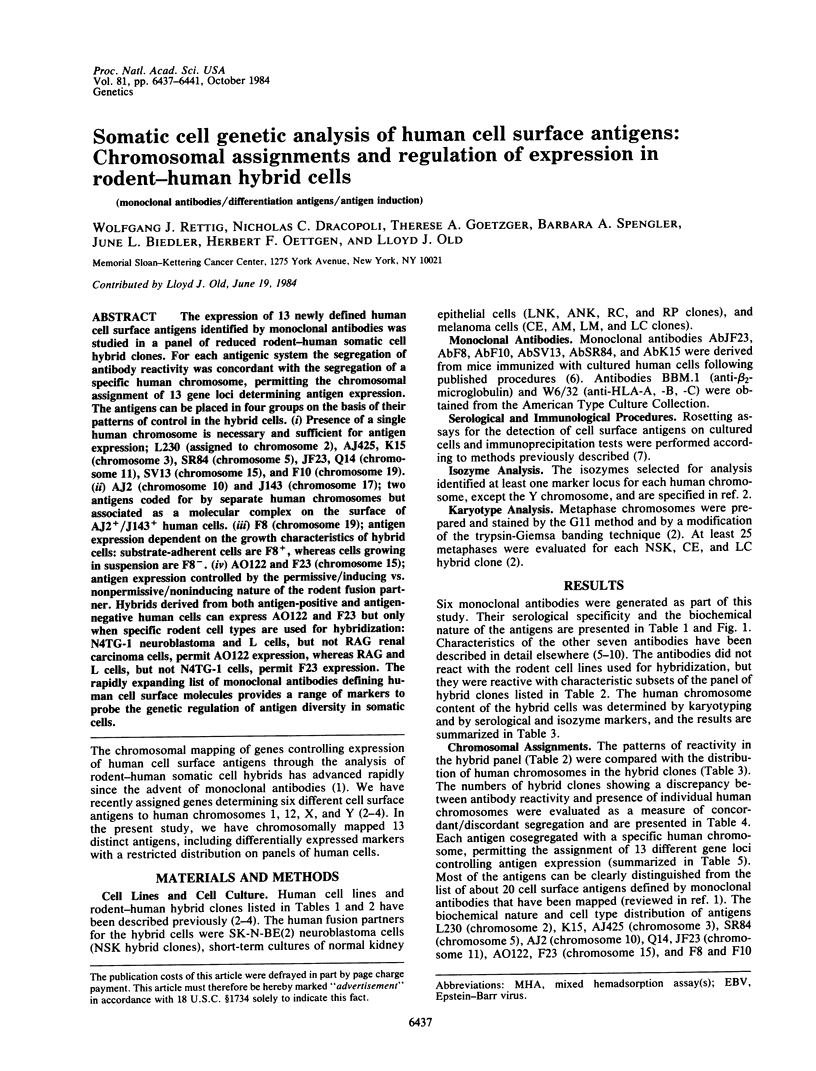

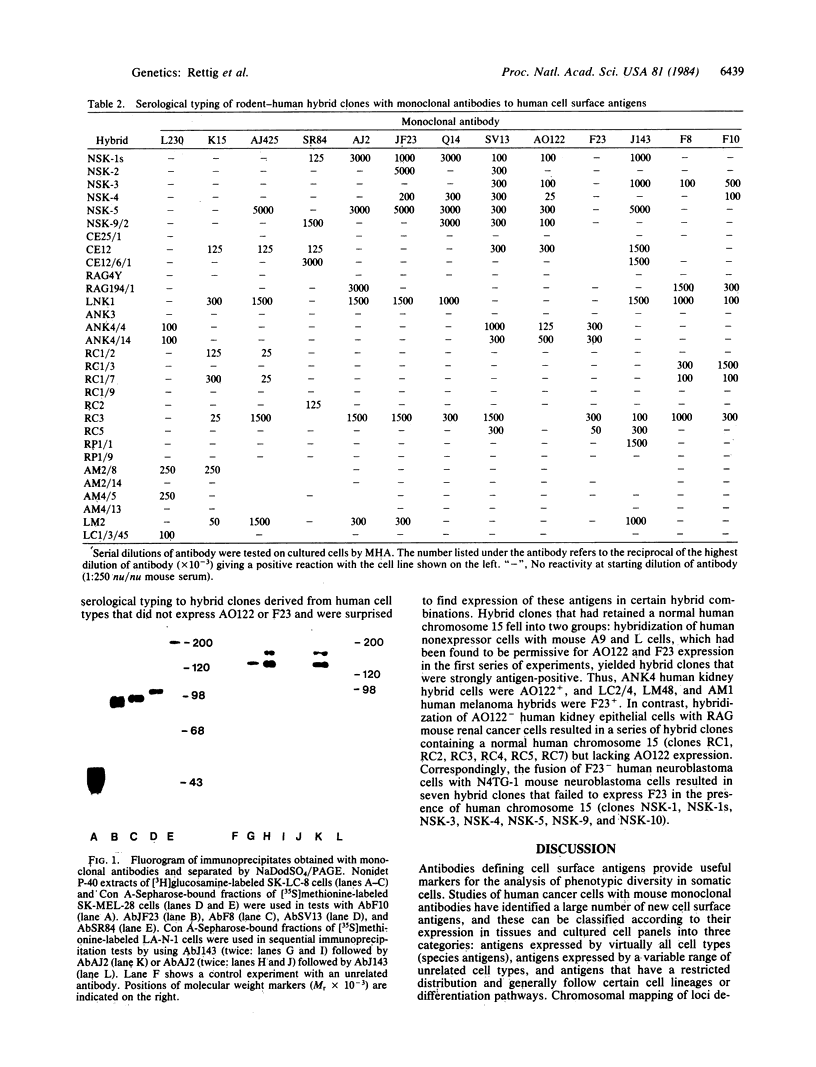
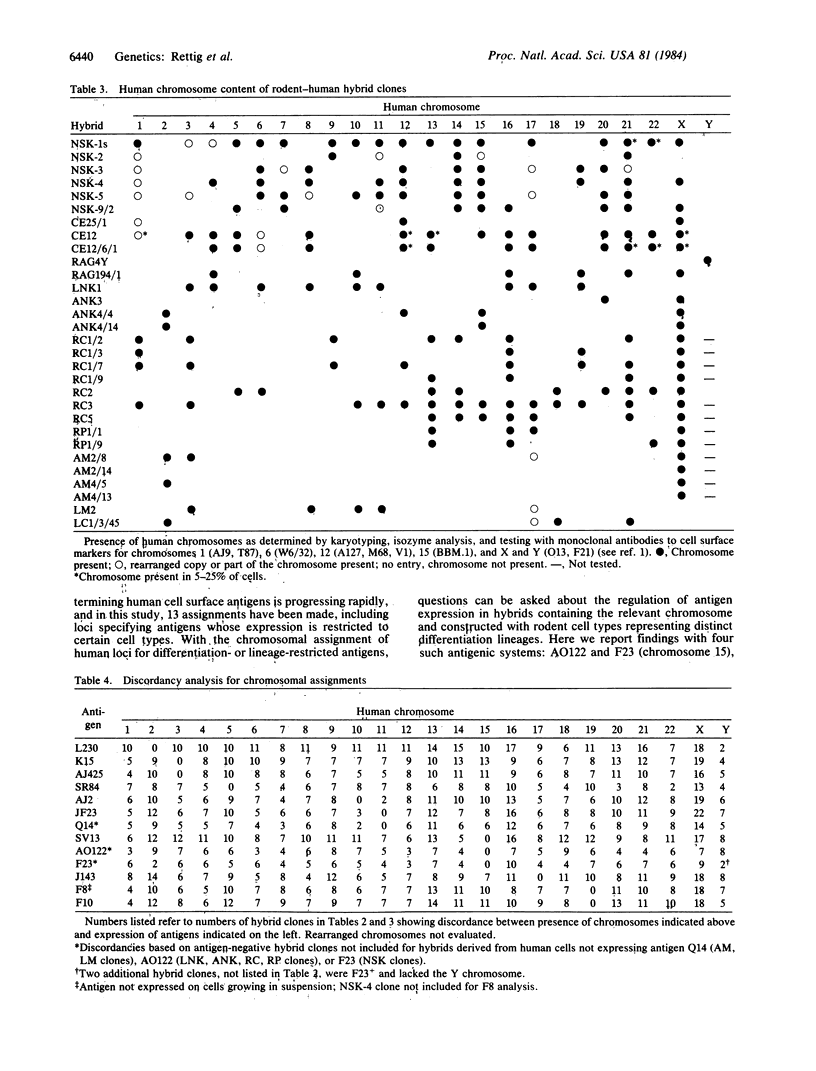
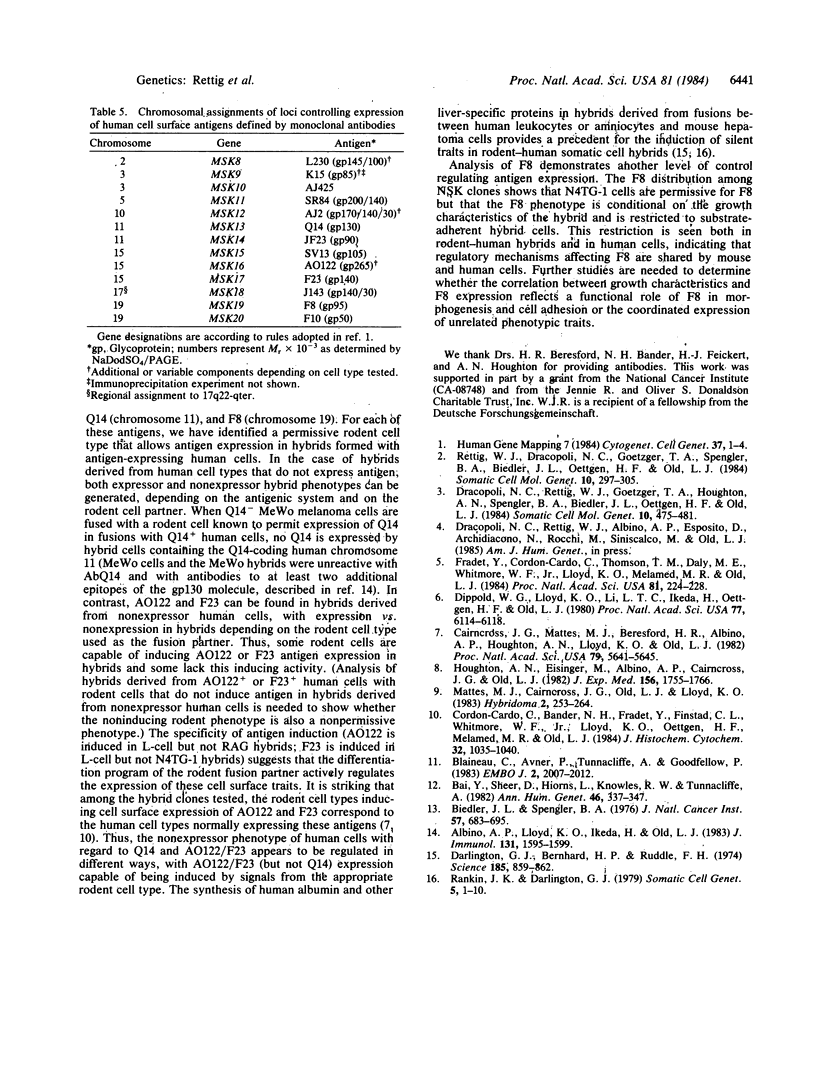
Images in this article
Selected References
These references are in PubMed. This may not be the complete list of references from this article.
- Albino A. P., Lloyd K. O., Ikeda H., Old L. J. Biochemical analysis of a 130,000 molecular weight glycoprotein on human melanoma cells. J Immunol. 1983 Sep;131(3):1595–1599. [PubMed] [Google Scholar]
- Bai Y., Sheer D., Hiorns L., Knowles R. W., Tunnacliffe A. A monoclonal antibody recognizing a cell surface antigen coded for by a gene on human chromosome 17. Ann Hum Genet. 1982 Oct;46(Pt 4):337–347. doi: 10.1111/j.1469-1809.1982.tb01584.x. [DOI] [PubMed] [Google Scholar]
- Biedler J. L., Spengler B. A. A novel chromosome abnormality in human neuroblastoma and antifolate-resistant Chinese hamster cell lives in culture. J Natl Cancer Inst. 1976 Sep;57(3):683–695. doi: 10.1093/jnci/57.3.683. [DOI] [PubMed] [Google Scholar]
- Blaineau C., Avner P., Tunnacliffe A., Goodfellow P. 'Attached cell' antigen 28.3.7 mapping to human chromosome 15 characterises TPA-induced differentiation of the promyelocytic HL-60 cell line to give macrophage/monocyte populations. EMBO J. 1983;2(11):2007–2012. doi: 10.1002/j.1460-2075.1983.tb01692.x. [DOI] [PMC free article] [PubMed] [Google Scholar]
- Cairncross J. G., Mattes M. J., Beresford H. R., Albino A. P., Houghton A. N., Lloyd K. O., Old L. J. Cell surface antigens of human astrocytoma defined by mouse monoclonal antibodies: identification of astrocytoma subsets. Proc Natl Acad Sci U S A. 1982 Sep;79(18):5641–5645. doi: 10.1073/pnas.79.18.5641. [DOI] [PMC free article] [PubMed] [Google Scholar]
- Cordon-Cardo C., Bander N. H., Fradet Y., Finstad C. L., Whitmore W. F., Lloyd K. O., Oettgen H. F., Melamed M. R., Old L. J. Immunoanatomic dissection of the human urinary tract by monoclonal antibodies. J Histochem Cytochem. 1984 Oct;32(10):1035–1040. doi: 10.1177/32.10.6384360. [DOI] [PubMed] [Google Scholar]
- Dippold W. G., Lloyd K. O., Li L. T., Ikeda H., Oettgen H. F., Old L. J. Cell surface antigens of human malignant melanoma: definition of six antigenic systems with mouse monoclonal antibodies. Proc Natl Acad Sci U S A. 1980 Oct;77(10):6114–6118. doi: 10.1073/pnas.77.10.6114. [DOI] [PMC free article] [PubMed] [Google Scholar]
- Dracopoli N. C., Rettig W. J., Goetzger T. A., Houghton A. N., Spengler B. A., Oettgen H. F., Biedler J. L., Old L. J. Three human cell surface antigen systems determined by genes on chromosome 12. Somat Cell Mol Genet. 1984 Sep;10(5):475–481. doi: 10.1007/BF01534852. [DOI] [PubMed] [Google Scholar]
- Fradet Y., Cordon-Cardo C., Thomson T., Daly M. E., Whitmore W. F., Jr, Lloyd K. O., Melamed M. R., Old L. J. Cell surface antigens of human bladder cancer defined by mouse monoclonal antibodies. Proc Natl Acad Sci U S A. 1984 Jan;81(1):224–228. doi: 10.1073/pnas.81.1.224. [DOI] [PMC free article] [PubMed] [Google Scholar]
- Houghton A. N., Eisinger M., Albino A. P., Cairncross J. G., Old L. J. Surface antigens of melanocytes and melanomas. Markers of melanocyte differentiation and melanoma subsets. J Exp Med. 1982 Dec 1;156(6):1755–1766. doi: 10.1084/jem.156.6.1755. [DOI] [PMC free article] [PubMed] [Google Scholar]
- Mattes M. J., Cairncross J. G., Old L. J., Lloyd K. O. Monoclonal antibodies to three widely distributed human cell surface antigens. Hybridoma. 1983;2(3):253–264. doi: 10.1089/hyb.1983.2.253. [DOI] [PubMed] [Google Scholar]
- Rankin J. K., Darlington G. J. Expression of human hepatic genes in mouse hepatoma--human amniocyte hybrids. Somatic Cell Genet. 1979 Jan;5(1):1–10. doi: 10.1007/BF01538781. [DOI] [PubMed] [Google Scholar]
- Rettig W. J., Dracopoli N. C., Goetzger T. A., Spengler B. A., Biedler J. L., Oettgen H. F., Old L. J. Two cell-surface markers for human chromosome 1 in interspecies hybrids. Somat Cell Mol Genet. 1984 May;10(3):297–305. doi: 10.1007/BF01535251. [DOI] [PubMed] [Google Scholar]



